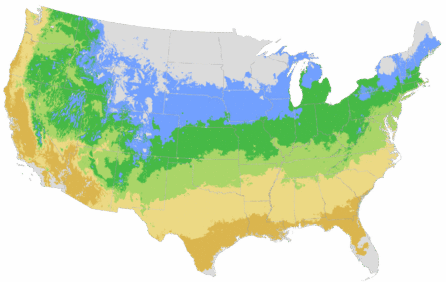You're growing in this Zip Code:
Change LocationDiscover Plants for Your Area
Provence Lavender
Lavandula x intermedia 'Provence'
Retailers Near You
No Retailers found within 100 miles of your zipcode
Be Inspired: How to Use this Plant
| Bloom Time | Summer |
|---|---|
| Deciduous/Evergreen | Evergreen |
| Special Features | Dramatic Foliage Color, Easy Care, Waterwise, Compact Form |
| Problems/Solutions | Deer Resistant, Rabbit Resistant |
| Growth Rate | Moderate |
| Flower Attributes | Flowers for Cutting, Fragrant, Showy Flowers |
| Landscape Use | Border, Container |
| Design Ideas | A superior plant for hot, dry slopes and banks. Rugged enough for rock gardens in warm climates where it is likely to naturalize. Exceptional component of Mediterranean style gardens both formal and casual. With similar requirements as western natives, it is suitable for xeriscape or wild gardens in dry climates. Suited to traditional mixed borders with perennials and flowering shrubs. Performs in large artistic pots and particularly beautiful in classical style with antique finish. An indispensable component of herb gardens. |
| Flower Color | Purple |
| Foliage Color | Gray-green |
| Companion Plants | Black-Eyed Susan (Rudbeckia); Coneflower (Echinacea); Shasta Daisy (Chrysanthemum); Rose (Rosa); Rosemary (Rosmarinus) |
| Care Instructions | Thrives in lean, loose, fast-draining, slightly alkaline soil; avoid heavy, soggy soils. Plant with crowns slightly above soil level, with minimum spacing of 3 ft. Water regularly in first growing season to establish root system. Once established, reduce frequency; tolerates periodic drought. Remove spent flowers to promote continued bloom. |
| Lore | Since the ancient Phoenicians and Egyptians who first utilized its oils, lavender has been central to medicine and hygiene of many cultures. The lavenders have been grown in Europe for centuries dating back to the Romans. It is from the Latin verb lavo that the genus was named, for this plant was commonly used in the famous Roman baths. It has remained in soaps and cosmetics ever since. This French lavender is not native to France but to drier Spain, Greece and North Africa; due to its widespread cultivation in the region of Provence, however, it has become decidedly French. |
| Bloom Time | Summer |
|---|---|
| Deciduous/Evergreen | Evergreen |
| Special Features | Dramatic Foliage Color, Easy Care, Waterwise, Compact Form |
| Problems/Solutions | Deer Resistant, Rabbit Resistant |
| Growth Rate | Moderate |
| Flower Attributes | Flowers for Cutting, Fragrant, Showy Flowers |
Retailers Near You
No Retailers found within 100 miles of your zipcode
Retailers Near You
No Retailers found within 100 miles of your zipcode
Buy Online
We cannot currently ship this product to your zip code.
About Us
We have been pioneers and craftsmen in the art of growing plants for nearly
100 years. Since our founding in Southern California by Harry E. Rosedale, Sr.
in 1926, we have been absolutely dedicated and obsessed with quality.
We have been pioneers and craftsmen in the art of growing plants for nearly 100 years. Since our founding in Southern California by Harry E. Rosedale, Sr. in 1926, we have been absolutely dedicated and obsessed with quality.









